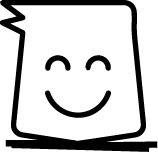
Animation is no longer just for entertainment. Businesses of all sizes are using animation to explain ideas, promote products, and connect with audiences in ways that text and static images often can't. But when deciding between 2D and 3D animation, the choice isn’t always obvious.
Each style has its own strengths. One might be more cost-effective, while the other could leave a stronger visual impression. To make the right decision for your brand, campaign, or service, you need to look at the details—not just the visuals, but the goals behind them.
Let’s explore what each type of animation brings to the table and which might align better with your business objectives.
1. Understanding the Basics
2. 2D vs 3D Animation: Which Is Better for Your Business Goals
3. Cost and Production Time
4. Visual Appeal and Engagement
5. Use Cases: When to Use What
6. Marketing Impact
7. Scalability and Flexibility
8. Conclusion: Which Is Better for Your Business?
9 FAQ's
Animation comes in two main forms: 2D and 3D. 2D animation is flat, simple, and great for explaining ideas clearly. 3D animation adds depth and realism, making it ideal for showcasing products or creating immersive visuals. Understanding how they differ helps you choose the right one for your business goals.
2D animation involves creating movement in a two-dimensional space. It’s the flat, classic animation style you’ve seen in explainer videos, cartoons, and apps. Everything—from characters to backgrounds—exists in a flat plane with only height and width. 1. Explainer videos 2. Educational content 3. Motion graphics 4. Mobile apps and websites
This style is widely used in:
3D animation uses a three-dimensional space, giving characters and objects depth, volume, and realistic movement. Think of Pixar films or high-end product commercials. It creates the illusion that you're looking at something tangible and real.
Common uses include:1. Product demos
2. Medical visualizations
3. Architecture walkthroughs
4. Advanced advertisements
| Feature | 2D Animation | 3D Animation |
|---|---|---|
| Visual Style | Flat, stylized | Realistic or stylized depth |
| Production Time | Generally shorter | Typically longer |
| Cost | Lower | Higher |
| Use Cases | Explainers, social media | Product demos, brand films |
| Customization | Quick to update | Requires more technical work |
If you're a startup or a small brand, budget often takes center stage. 2D animation is usually more affordable. It requires fewer tools, smaller teams, and a simpler pipeline.
3D animation, on the other hand, demands advanced software, experienced artists, and longer render times. Costs can rise quickly, especially for detailed characters or lifelike scenes
2D projects can often be turned around in a few days to a couple of weeks, depending on complexity. That makes it a great option when you need something fast—for a pitch, event, or new campaign
2D animations are often bright, bold, and to-the-point. They’re great for breaking down complex topics in a simple and visual way. The style also allows for a lot of creative freedom with shapes, colors, and transitions.
3D animation shines when you want to immerse your viewer in a world or experience. It’s particularly powerful for showing physical products in action, giving your audience a “virtual touch” experience. Want to show a product being assembled or a factory in motion? 3D makes it possible.
3D animations often come off as more modern and polished, which can boost your brand’s perceived quality. However, they can also feel too serious or corporate if not done well.
2D animations are friendlier and often more approachable. They’re ideal for educational or playful content, especially when you want to explain an idea without overwhelming the viewer.
1. You need a quick explainer video for your website or pitch.
2. Your goal is to simplify a technical concept.
3. You're targeting mobile users or social platforms.
4. You’re working with a tight budget
1. You want to showcase a physical product with high detail.
2. Your brand image relies on premium or high-tech visuals.
3. You're in architecture, medical, manufacturing, or engineering.
4. You need to simulate real-life movement or lighting.
2D animations tend to perform well on social media. They’re lighter, quicker to load, and great for attention-grabbing intros. You can easily adapt them to Instagram Reels, TikTok, or LinkedIn without heavy editing.
3D animations often perform better in product-based marketing, especially on websites, landing pages, or during trade shows. They’re impressive and memorable, especially when they’re interactive.
Videos in general improve SEO rankings and keep users engaged. The key is whether your animation serves the purpose. If you’re trying to explain a concept, 2D may keep viewers watching longer. If your video is purely visual—like a product teaser—3D might create more impact and shares.
Animations that clearly communicate value tend to convert better. Whether it’s 2D or 3D doesn’t matter as much as the clarity of your message. That said, a professional-looking 3D video may boost trust in high-value products, while a snappy 2D explainer might drive more clicks for app downloads or signups.
Once created, 2D assets are easier to update. Want to change a voiceover or add a new icon? No problem. You can also repurpose 2D animations into gifs, reels, and ads more easily.
3D assets can be reused too—but updating them might require revisiting models, lighting, or rendering, which takes time and technical know-how.
If you plan to scale your content or make frequent updates, think carefully about how easy each style is to manage over time.
There’s no one-size-fits-all answer. The “better” animation style depends entirely on your goals, audience, timeline, and budget. 1. Need to explain something clearly and quickly 2. Are on a tight timeline or budget 3. Want a friendly, minimal style 1. Need to show physical products in detail 2. Want to impress with lifelike visuals 3. Have the time and resources for a more involved project
● Choose 2D animation if you:
In many cases, a mix of both styles might even work best. Some brands use 2D for onboarding and education, and 3D for product pages and ads. The right choice is the one that helps you connect with your audience and deliver your message effectively.

Is 3D animation always more expensive than 2D?
Can I use both styles in the same project?
Which animation style works better for mobile users?
Is 3D worth it for small businesses?
How do I choose an animation studio or freelancer?

Years in Work

Project done

Happy Clients
